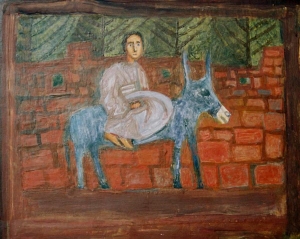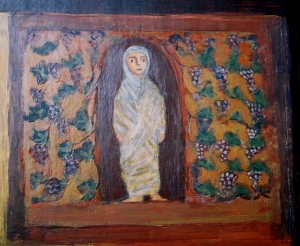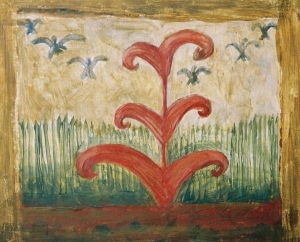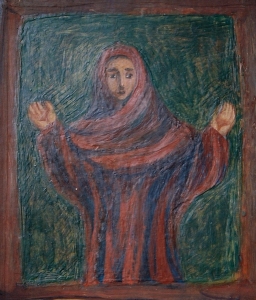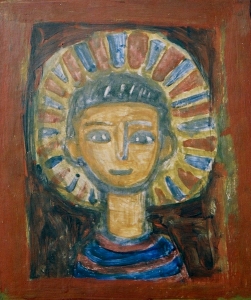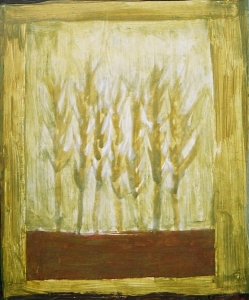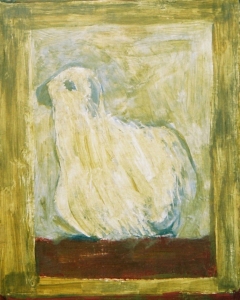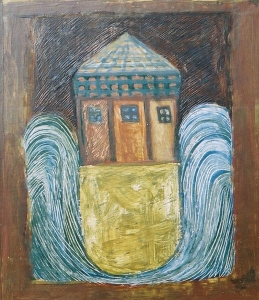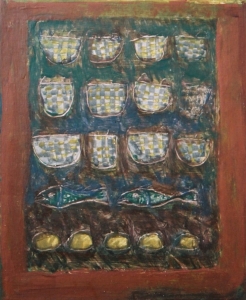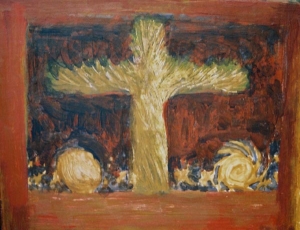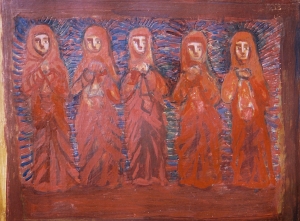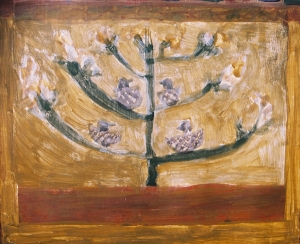The Icon of the Parables
my Master of Fine Arts work from 2006, details
This work from 2006 was initially meant to be a practical more than a theoretical one, as it came out. Its idea was given to me by the professor Ion Lazăr (at the University of Arts from Bucharest) in the frame of my master studies of „The Art Techniques” with application on the Byzantine style. His vision was that of an icon of some of the parables from the New Testament. Also it was his idea to place „The Vine and the Branches” in the center of the composition and he gave me this reproduction as a model (the only icon of a parable he encountered):
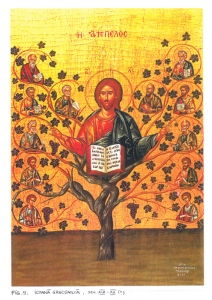
Christianity was one of my main interests at that time. Having to choose some parables meant better knowing them all. This was a subject for one year, that is why my research remained restricted to its connection with the practical realization of the painting.
The main purpose – for me, was reached: to present a justified new iconographic model and realize a beautiful painting. The purpose intended by my professor was not: the painting was not made in the Byzantine style. Along the research, I discovered that the Paleochristian expression was much more suitable for my ideas and partially was even their source.
- My “proposal” was not a demand for the introduction within the religious canon of a new iconographic model. But it was a meditation on the needs and possibilities of the religious art to update itself, as the Byzantine style employed by the Orthodox Christianity relates only to a specific era (the one that was glorious for the Church); far from being an apology for the secularization, illustrated by the Catholicism, where the Tradition was lost through the “earthly” that is depicted.
- Why was this model of icon something new, how do we find the parables of Jesus illustrated in the Christian art? Usually in miniatures and mural paintings (and other forms in the West), only through a part of the story or detailed in multiple scenes, interpreted already or not… Because the Icon is more fitted to make present the Divinity: God, the saints, the angels or the biblical events that the believer celebrates in his life (real things, not stories).
- About the Parables – what are they? How many are they and which ones among Jesus’ sermons can be identified as parables? The way they were grouped by different theologians. And in particular for my work – how to choose some representative ones?
- Important concepts: mašal, midrash, symbolon, parabolé, “pilda” (the original name, in Romanian, is “Icoana pildelor” not “Icoana parabolelor” and for a good reason, but to translate it I didn’t find the equivalent word in English; “pilda” means “model and story” at the same time, coming from the German “Bilde” – “Bildung” through the Hungarian “példa”), velum – Revelation, Ye[hô]shoua – Christus – Meshîhâ, Logos and others.
- Conclusions: there is no way to rigidly categorize the parables of Jesus. I saw the repetitive motives, the importance of the symbols as links between our perception and the Reality and the similarities between some of the parables told by Jesus and the real stories of His life. I started the research by making an inventory of the parables, one by one and through different filters, until I came to visualize them, to have “the whole picture” – at that moment I only had to attribute to the elements of my picture each one’s explanation – both in itself and in relation to the others. (hearing → seeing → understanding)
The Icon of the Parables, photo 2016

